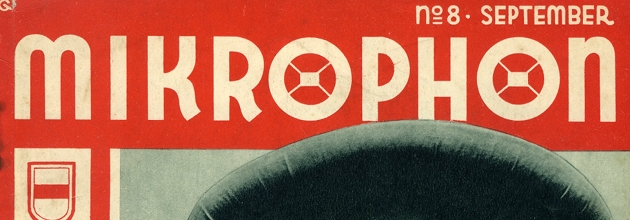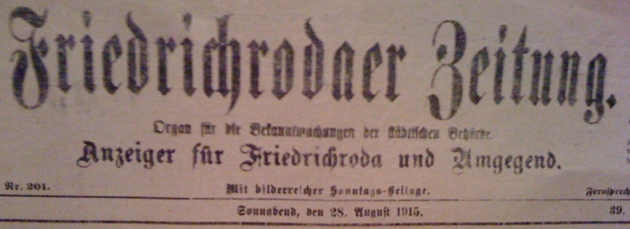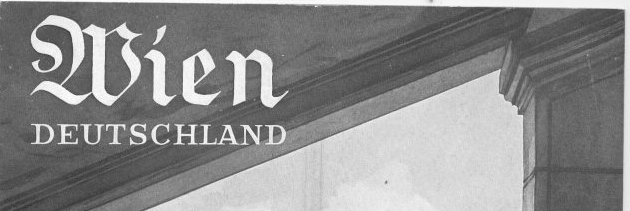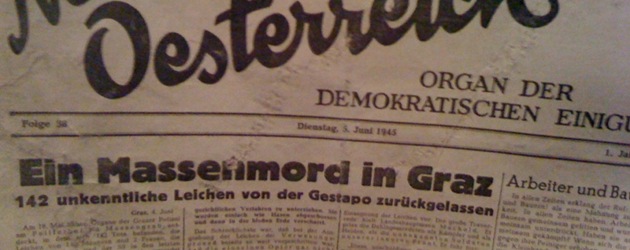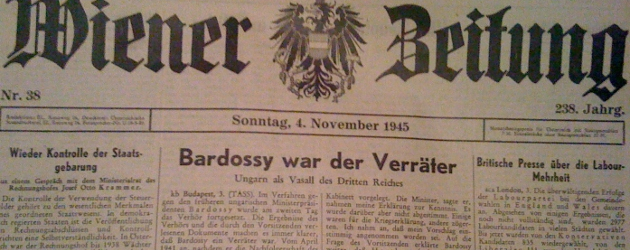Amateur history nerd that I am, I’m quite pleased to have married into a family which has retained all sorts of books, newspapers and magazines dating from about 1920 onwards. The “In the Hausarchiv” series gives an occasional look at the things I’ve come across in our own “house archive”.
Last time I featured a letter from an East German penpal of my wife. I’m going to do the same again in this post, though this letter comes from a different young man in East Germany.
The first thing that caught my eye was the postage stamp. It commemorates the 50th anniversary of what has commonly been referred to as “Kristallnacht“, or “The November Pogrom”. On this East German stamp it is called the “Fascist Pogrom Night”. This is factually true, but I had to laugh a bit because it’s a very, very East German (communist) way of putting it. The regime in East Germany went to great lengths to define itself as anti-fascist. The Berlin Wall itself was officially named the “Anti-Fascist Protection Wall.”
 But now let’s get to the good stuff, the words written by this young man. If you look at the bigger version of the note (click on it), the top of the right-side reads as follows:
But now let’s get to the good stuff, the words written by this young man. If you look at the bigger version of the note (click on it), the top of the right-side reads as follows:
A week ago we had a very nice yet sad farewell party. Two couples whom I know well have finally received their permit to emigrate to West Germany, after three years of waiting.
…
Such a farewell was definitely sad, but we’re all agreed that someday the walls will fall and we’ll all see each other again. I’m so looking forward to that.
I confess that those words stirred me emotionally. The letter is undated and the postmark is unclear, but from the content (he speaks of the “new year”) I assume it was written in January of 1989. Fortunately he only had another 10 months to wait before being able to go to the West and visit his friends.
I hunted through other letters from this particular young man and found one which stirred me even more. It contains this fantastic passage:
On 18 and 19 June [1988], Fisher-Z, Marillion, Heinz-Rudolf Kunze, Big Country and the absolutely awesome BRYAN ADAMS played in East Berlin. And so I went with my friends to Berlin for the very first time. I was absolutely overwhelmed and I’m still processing it all now. It started even before we reached Berlin. There I was driving comfortably in the car and all of a sudden there was a deafening roar above us: a Pan Am jet landed at the airport next to the Autobahn. I’ve seen it a thousand times on television, but when you actually experience it it’s really something.
Then we went with the S-Bahn [regional train] and suddenly there were giant white skyscrapers. Jan nudged me and said that that was West Berlin. I said loudly, “You’re crazy, that’s not West Berlin. They would never let us get so close!” A woman across from me smiled and said, “Just wait, young man. In a second you’ll see the Wall — it really is West Berlin.”
And then I saw it, the Wall and watchtowers, and shivers ran down my spine [mir lief es eiskalt den Rücken runter]. Dani, I’m sure you’ve heard much about the Wall just like I have, but when you’re standing right in front of it — you just can’t imagine what a feeling it is, you can hardly believe it’s real: freedom so close, yet so far. [so nah die Freiheit und doch so weit].
…
I’ve never seen such a concert live; it was a beautiful high point of my life.
Until next time,

Bill Dawson
P.S. Don’t forget to check out my Berlin Wall resources page!
P.P.S. The concert is mentioned in an interesting English-language article at the website of the German magazine Der Spiegel.

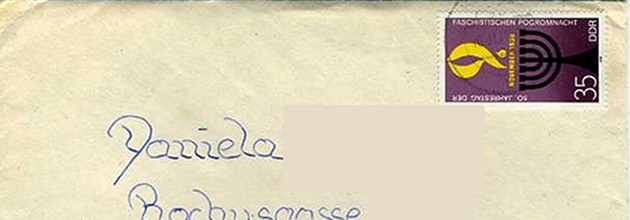


 )
)

